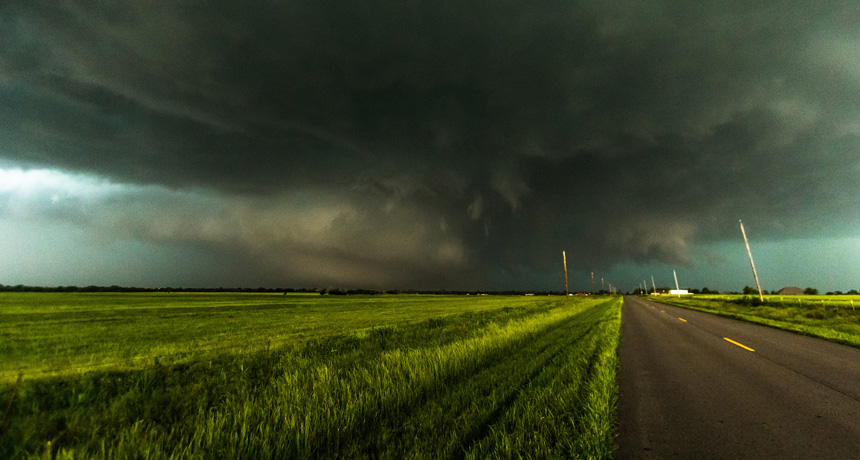
TITANIC TWISTER The public’s response to the widest tornado ever recorded (pictured) suggests that earlier tornado warnings could lead people to make unsafe decisions.
Daniel Rodriguez/Flickr (CC BY 2.0)
- More than 2 years ago
For more on the future of forecasting, see SN‘s feature “Weather forecasting is getting a high-speed makeover.”
More advanced warnings of incoming weather systems sound like a great idea, but researchers are learning that people don’t always do what’s expected.
The National Oceanic and Atmospheric Administration’s Severe Storms Laboratory is developing a system, called Warn-on-Forecast, that could one day provide tornado warnings an hour or more before a twister hits, more than quadrupling the current 14 minutes of warning time (SN: 5/2/15, p. 20). Forecasters, however, worry about how people will spend that extra time, says Kim Klockow, a meteorologist and behavioral scientist at University Corporation for Atmospheric Research who is based in Silver Spring, Md.
Historical storms suggest that people can make the wrong call, she says. On May 31, 2013, a monster 4.2-kilometer-wide twister touched down outside Oklahoma City. Just 11 days before, a tornado ravaged nearby Moore, Okla., damaging as many as 13,000 homes and killing 24 people. With that disaster fresh on people’s minds (plus a few local weather reports urging people without basements to head south), thousands jumped into their cars and drove instead of taking shelter. The highways quickly became a congested, chaotic mess. Cars headed south on northbound lanes and gridlock extended more than 40 kilometers out of the city. “They just left their houses and headed south,” Klockow says.
GRIDLOCK Thousands of people fled south as a colossal tornado touched down near Oklahoma City in May 2013. Had the tornado veered into the traffic jam, hundreds could have been killed.jmd091555/YouTube |
Things soon got worse. While many tornadoes travel northeast, the behemoth twister headed south, toward carloads of fleeing families. Meteorologists looked on terrified, unable to do anything to help. Cars offer next to no protection from even a mild tornado, let alone a twister with winds nearing 475 kilometers per hour. If the storm hit the highway, estimates suggest that hundreds could have been killed.
“This was in the most tornado-savvy part of the country and we had possibly the worst survival response we’ve ever seen,” she says. “This was possibly the greatest natural disaster that almost was in recent U.S. history.”
A survey conducted in 2009 gave an early indication that others would do the same if provided with the advanced warnings that will come with Warn-on-Forecast. Klockow, who coauthored the study, says the results reveal that people have a systematic tendency to flee and often don’t understand the risks involved.
Experts in risk communications will also have to figure out how to help people make sense of the way Warn-on-Forecast provides tornado warnings. Instead of a single warning of an impending twister, the system estimates the percentage risk for a certain area being hit by a tornado in the near future. In a September 9 article in Eos, meteorologist Lans Rothfusz, one of the scientists behind Warn-on-Forecast, laid out the risks of communicating probabilities to the public. Before implementing this new way of communicating weather predictions, he and colleagues wrote, meteorologists need to educate the public on how to respond.
The good news, Klockow says, is that Warn-on-Forecast is still years away from being fully implemented. Forecasters are developing communication plans for this and other precision weather prediction systems to help people make better-informed, safer decisions when faced with looming natural disasters.







